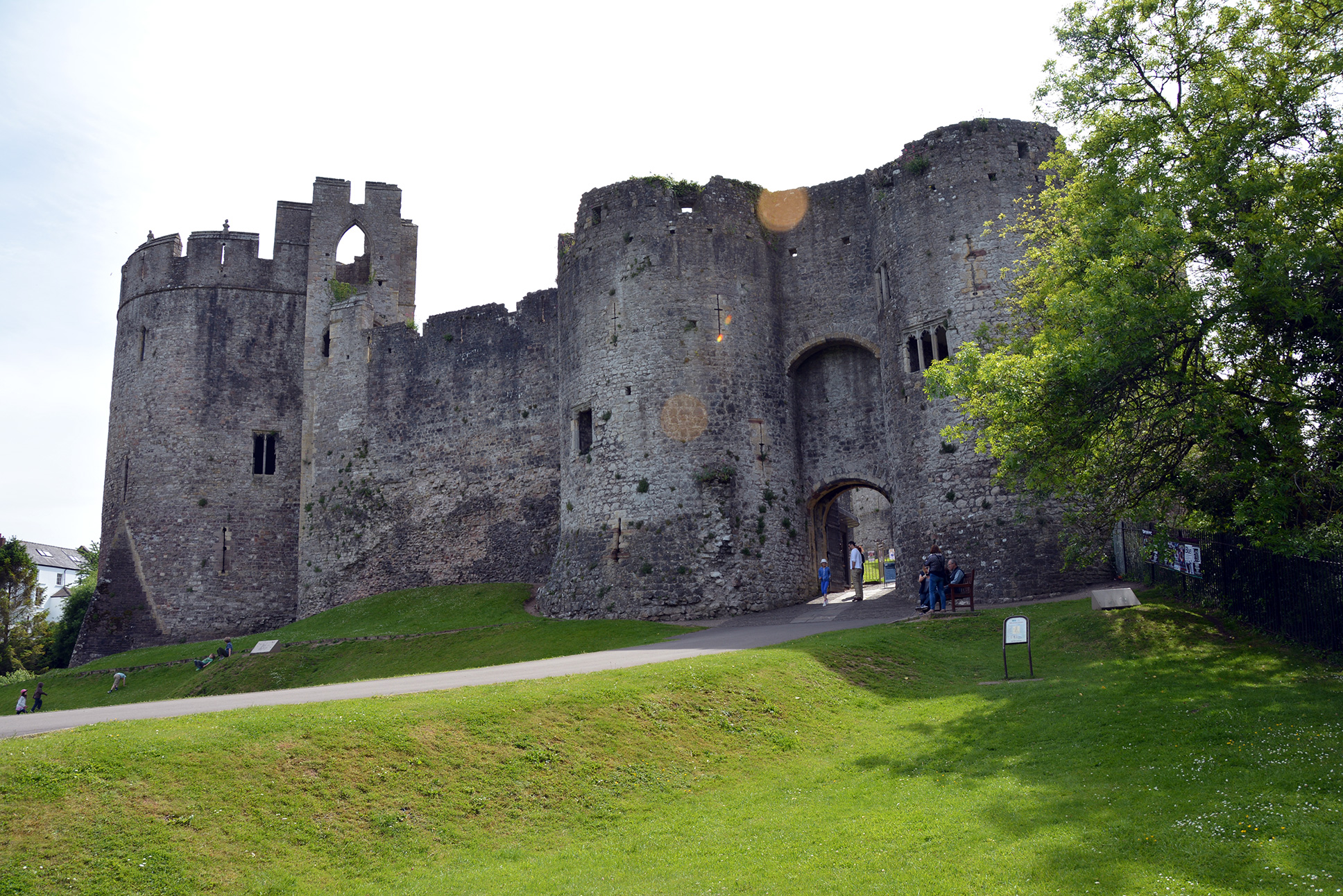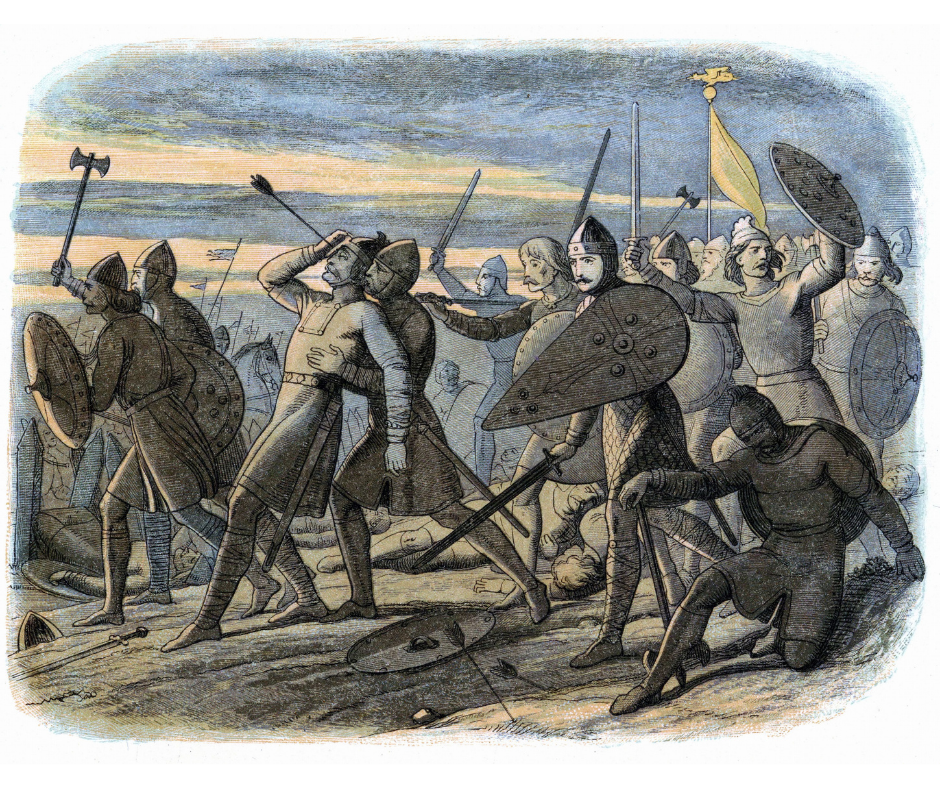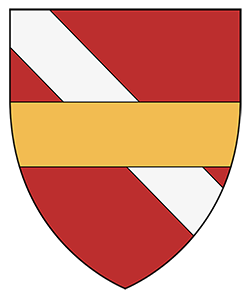William FitzOsbern - 1st Earl of Hereford
Sire, we tarry here too long. Let us arm ourselves. Allons! Allons!
William FitzOsbern was a relative and close counselor of William the Conqueror, one of his few proven companions known to have fought by his side at the Battle of Hastings in 1066.

William FitzOsbern was the son of Osbern the Steward, the steward of Richard I, Duke of Normandy. Osbern married Emma, the daughter of Count Rodulf of Ivry, who was a half-brother of Richard. William FitzOsbern was likely raised at the court of his cousin William, Duke of Normandy, and like his father, became a steward to the Duke.
He married Adeliza de Tosny around 1030, and together they founded Lyre Abbey, later Cormeilles Abbey, and Saint-Evroul Abbey.
FitzOsbern was one of the most vigorous advocates for the invasion of England, convincing the doubters among the barons of the feasibility of the invasion. FitzOsbern himself would have 60 ships built with fighting men and servants to tend the horses in support of the invasion.
Before the Battle, Duke William calls on his men to do their utmost, when FitzOsbern urges his lord against hanging around too long with the enemy close at hand.
"Sire, we tarry here too long. Let us arm ourselves. Allons! Allons!"
William FitzOsbern fought alongside the Duke of Normandy during the Battle of Hastings. After the Duke became King William of England, FitzOsbern played a crucial role in helping to expand Norman rule to the Welsh border. He became Earl of Hereford in early 1067.

FitzOsbern was given the Isle of Wight as the Normans took control of England. He also had land holdings in Gloucestershire, Herefordshire, Oxfordshire, and smaller areas in Berkshire, Dorset, Wiltshire, and Worcestershire. In 1067, King William returned to Normandy and left his half-brother, Bishop Odo of Bayeux, and FitzOsbern to oversee England in his absence.
FitzOsbern was a skilled fighter and a major castle builder. He was responsible for building Carisbrooke Castle on the Isle of Wight, which he used as his primary residence. He also built the castles at Berkeley, Chepstow, Clifford, Ewias Harold, Monmouth, and Wigmore to help maintain power over the Welsh on the border with England.
White Castle, Skenfrith Castle, and Grosmont Castle were built in Monmouthshire, Wales, soon after the Battle of Hastings to protect the communication routes between Herefordshire and Wales as the Normans advanced into Wales. They were known as the "Three Castles" and were possibly commissioned by William FitzOsbern.
The King returned to England in 1068, and FitzOsbern assisted him in subjugating south-west England. He also attended the King's Whitsun court in May of 1068 and then returned to Normandy, where he fell ill for several months.
In February of 1069, the King again called on FitzOsbern to oversee peace in York, where Gilbert de Ghent was made castellan of the new castle. FitzOsbern returned south to attend the King's East Court in April 1069.
In 1069, following a revolt in the West Midlands by Eadric the Wild and likely Welsh allies Bleddyn and Rhiwallon ap Gruffyd, FitzOsbern and his followers pushed westwards into Wales, marking the beginning of the Norman conquest of the Welsh Kingdom of Gwent.
In 1070, Baldwin VI of Flanders died, leaving his son Arnulf as his successor. Robert I of Flanders, Baldwin's younger brother, challenged that succession. Baldwin's widow, Richilde, supported her son Arnulf and offered her hand in marriage to William FitzOsbern to strengthen her position. William accepted, and they were married.
On February 22nd, 1071, the Battle of Cassel was fought between Arnulf and Robert over the title of Count of Flanders. King Philip sent a contingent of ten Norman knights led by William FitzOsbern to aid Arnulf. Arnulf and FitzOsbern were both killed in the battle. His men-at-arms took William's body to Cormeilles Abbey in Normandy.
